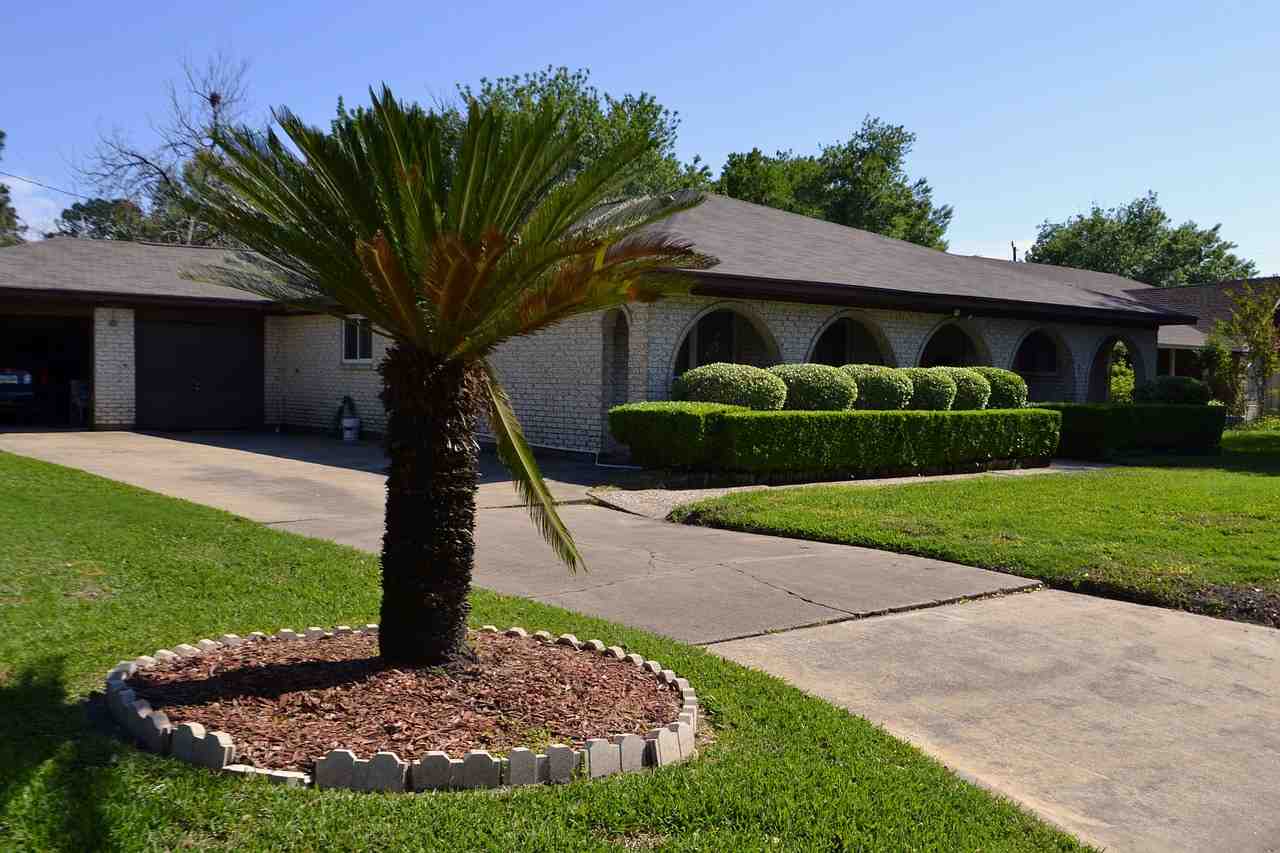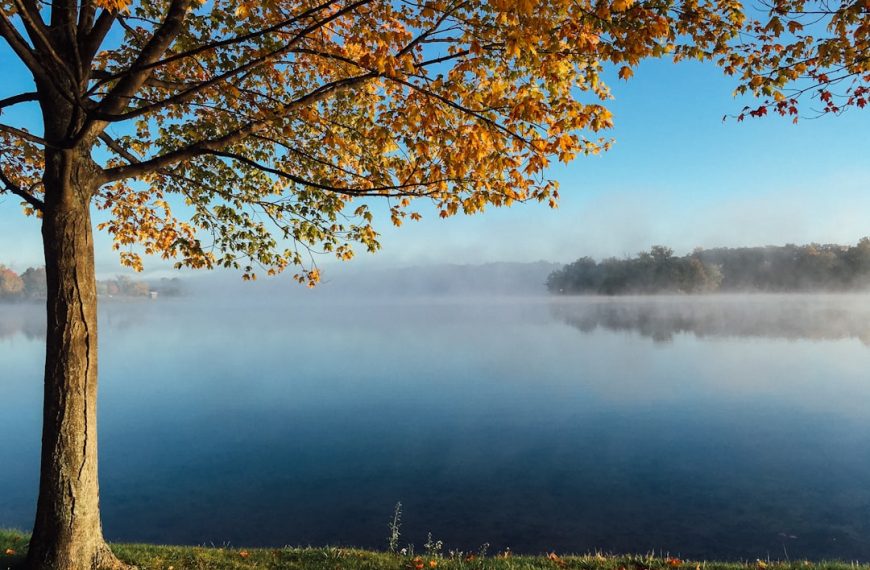Trimming tall pine trees is an important aspect of tree maintenance that should not be overlooked. Tall pine trees can provide shade, beauty, and privacy to your property, but they also require regular care to ensure their health and safety. Trimming tall pine trees involves removing dead or diseased branches, shaping the tree for aesthetic purposes, and preventing potential damage to property or safety hazards. In this article, we will discuss the importance of trimming tall pine trees, the tools needed for the job, safety precautions to take, how to assess tree health, techniques for pruning, tips for shaping, disposal of branches and debris, maintenance after trimming, when to call in a professional, and conclude with a final word of advice.
Why trimming tall pine trees is important
Trimming tall pine trees offers numerous benefits that contribute to the overall health and appearance of the tree. Firstly, regular trimming helps improve tree health by removing dead or diseased branches. These branches can be a breeding ground for pests and diseases that can spread throughout the tree if left unattended. Trimming also allows for better air circulation and sunlight penetration, which are essential for the tree’s growth and development.
Secondly, trimming tall pine trees helps prevent damage to property. Overgrown branches can pose a risk to buildings, vehicles, and other structures on your property. During storms or high winds, these branches can break off and cause significant damage. By regularly trimming tall pine trees, you can reduce the risk of such incidents and protect your property from potential harm.
Lastly, trimming tall pine trees reduces safety hazards. Overgrown branches can obstruct walkways or block visibility on roads or driveways. This can be dangerous for pedestrians and drivers alike. By keeping your tall pine trees properly trimmed, you ensure a safe environment for yourself and others.
Tools needed for trimming tall pine trees
To effectively trim tall pine trees, you will need a few essential tools. These tools include pruning shears, loppers, and a pole saw. Pruning shears are used for cutting small branches and twigs. They are lightweight and easy to handle, making them ideal for reaching tight spaces within the tree.
Loppers, on the other hand, are used for cutting thicker branches that cannot be easily handled by pruning shears. They have long handles that provide leverage and allow you to cut through branches with ease. Loppers come in different sizes, so choose one that suits the thickness of the branches you will be trimming.
A pole saw is a necessary tool for trimming tall pine trees as it allows you to reach higher branches without the need for a ladder. It consists of a saw blade attached to a long pole, which can be extended to reach higher branches. When using a pole saw, it is important to follow safety precautions and ensure that the pole is stable and secure.
Safety precautions to take before trimming tall pine trees
| Safety Precautions | Description |
|---|---|
| Wear Protective Gear | Wear a hard hat, eye protection, gloves, and sturdy boots to protect yourself from falling debris. |
| Check the Weather | Avoid trimming trees during high winds, rain, or thunderstorms as it can be dangerous. |
| Inspect the Tree | Check the tree for any signs of damage, rot, or disease before trimming. Avoid trimming if the tree is unstable or has large branches that could fall. |
| Use the Right Tools | Use a sturdy ladder, pruning saw, and pole pruner to safely trim tall pine trees. Avoid using chainsaws or other power tools unless you are trained to use them. |
| Have a Spotter | Have someone on the ground to help guide you and keep an eye out for any potential hazards. |
| Plan Your Escape Route | Before trimming, plan a clear escape route in case of an emergency. |
Before you start trimming tall pine trees, it is crucial to prioritize safety. Tree trimming can be a hazardous task if not done properly. Here are some safety precautions to take:
1. Wear protective gear: Always wear safety goggles, gloves, and a hard hat when trimming tall pine trees. This will protect you from falling debris and potential injuries.
2. Check for power lines: Before starting any tree trimming work, make sure to check for nearby power lines. If there are power lines in close proximity to the tree, it is best to call a professional tree service to handle the job.
3. Use proper equipment: Ensure that all your tools are in good working condition and suitable for the task at hand. Dull or damaged tools can be dangerous and less effective.
4. Secure your footing: When using a ladder or climbing equipment, make sure it is stable and secure before climbing up. Avoid working on wet or slippery surfaces to prevent accidents.
5. Have a spotter: If you are working at heights or using heavy equipment, it is advisable to have someone on the ground to assist you and keep an eye out for any potential hazards.
By following these safety precautions, you can minimize the risk of accidents and ensure a safe trimming experience.
How to assess the health of your tall pine trees
Before trimming tall pine trees, it is important to assess their health to determine the extent of pruning required. Here are some steps to follow when assessing tree health:
1. Inspect the trunk: Look for any signs of damage or decay on the trunk of the tree. Cracks, holes, or oozing sap can indicate underlying issues that may require professional attention.
2. Check for dead branches: Dead branches are a common sign of tree decline. Look for branches that have no foliage or show signs of decay. These branches should be pruned to prevent further damage to the tree.
3. Observe leaf color and density: Healthy pine trees should have vibrant green needles and a dense canopy. If you notice yellowing or thinning foliage, it may indicate nutrient deficiencies or disease.
4. Look for signs of pests or diseases: Inspect the tree for any signs of pests such as bark beetles or diseases such as needle blight. These can cause significant damage if left untreated and may require professional intervention.
5. Assess overall tree structure: Check for any leaning or unbalanced growth patterns in the tree. Trees with structural issues may require pruning to improve stability and prevent potential hazards.
By assessing the health of your tall pine trees before trimming, you can tailor your pruning approach to address specific issues and promote overall tree health.
Identifying the branches that need to be pruned

Once you have assessed the health of your tall pine trees, it is important to identify which branches need to be pruned. Here are some guidelines to help you identify branches that require pruning:
1. Dead or diseased branches: Remove any branches that are dead, dying, or diseased. These branches not only detract from the tree’s appearance but can also spread pests or diseases to other parts of the tree.
2. Crossing or rubbing branches: Look for branches that are crossing or rubbing against each other. This can cause damage to the bark and create entry points for pests and diseases. Remove one of the crossing branches to alleviate this issue.
3. Low-hanging branches: Trim any low-hanging branches that obstruct walkways, driveways, or obstruct visibility. This will improve safety and prevent potential accidents.
4. Overcrowded branches: Thin out overcrowded branches to improve air circulation and sunlight penetration. This will promote overall tree health and reduce the risk of disease.
5. Weak or narrow-angled branches: Identify branches that have weak attachments to the trunk or narrow angles between the branch and trunk. These branches are prone to breakage and should be pruned to prevent potential hazards.
By identifying and pruning these specific branches, you can improve the overall structure and appearance of your tall pine trees.
Techniques for pruning tall pine trees
When it comes to pruning tall pine trees, there are several techniques you can employ depending on your specific goals. Here are some common pruning techniques:
1. Thinning: Thinning involves selectively removing branches throughout the tree to reduce density and improve air circulation. This technique is particularly useful for tall pine trees with dense canopies. Thinning allows more sunlight to reach the lower branches and promotes overall tree health.
2. Crown reduction: Crown reduction involves selectively removing the upper portion of the tree’s canopy to reduce its overall height. This technique is often used when a tree has outgrown its space or poses a risk to nearby structures or power lines. Crown reduction should be done carefully to maintain the tree’s natural shape and avoid excessive stress.
3. Deadwooding: Deadwooding is the removal of dead or dying branches from the tree. This technique is essential for maintaining tree health and preventing potential hazards. Dead branches can fall at any time, posing a risk to people and property.
4. Shaping: Shaping involves pruning to achieve a desired aesthetic appearance. When shaping tall pine trees, it is important to maintain their natural form and avoid over-pruning. Prune selectively to enhance the tree’s natural beauty without compromising its health.
It is important to note that pruning should be done during the dormant season when the tree is not actively growing. This minimizes stress on the tree and allows for faster healing of pruning wounds.
Tips for shaping your tall pine trees
Shaping tall pine trees requires careful consideration to maintain their natural beauty and health. Here are some tips to keep in mind when shaping your tall pine trees:
1. Start with a plan: Before you begin pruning, have a clear vision of how you want your tree to look. Consider the tree’s natural shape and work with it rather than against it.
2. Prune selectively: Avoid over-pruning by removing only the necessary branches. Removing too many branches can weaken the tree and make it more susceptible to pests and diseases.
3. Maintain a central leader: Tall pine trees typically have a central leader, which is the main vertical stem of the tree. Maintain this central leader by removing competing branches that may grow taller than the leader.
4. Avoid topping: Topping, or cutting off the upper portion of the tree, should be avoided as it can lead to weak regrowth and structural issues. Instead, opt for crown reduction techniques if necessary.
5. Step back and assess: Periodically step back and assess your progress as you shape your tall pine trees. This will help you maintain a balanced appearance and ensure that you are achieving your desired outcome.
By following these tips, you can shape your tall pine trees in a way that enhances their natural beauty and promotes their overall health.
How to dispose of the branches and debris after trimming
After trimming tall pine trees, you will be left with branches and debris that need to be disposed of properly. Here are some options for disposing of the branches and debris:
1. Composting: If you have a compost pile or bin, you can chop up the branches into smaller pieces and add them to your compost. Pine branches are rich in carbon and will break down over time, adding nutrients to your compost.
2. Mulching: Another option is to use a wood chipper to turn the branches into mulch. This mulch can be used in your garden beds or around the base of other trees and plants to help retain moisture and suppress weeds.
3. Curbside pickup: Check with your local waste management services to see if they offer curbside pickup for tree branches and debris. Some municipalities have specific guidelines for collection, so be sure to follow their instructions.
4. Yard waste facility: Many cities have designated yard waste facilities where you can drop off tree branches and debris for proper disposal. These facilities often recycle the organic material into mulch or compost.
5. Hire a professional tree removal service: If you have a large amount of branches and debris or if you are unable to dispose of them yourself, consider hiring a professional tree removal service. They will have the necessary equipment and expertise to safely remove and dispose of the branches.
It is important to note that burning tree branches and debris may not be allowed in certain areas due to fire safety regulations. Always check with local authorities before burning any vegetation.
Maintaining your trimmed tall pine trees
After trimming tall pine trees, it is important to maintain them properly to ensure their continued health and beauty. Here are some maintenance tips:
1. Watering: Provide adequate water to your tall pine trees, especially during dry periods. Deep watering is recommended to encourage deep root growth and ensure the tree’s stability.
2. Fertilization: Consider fertilizing your tall pine trees to provide them with essential nutrients. Consult with a professional arborist or horticulturist to determine the appropriate fertilizer and application method for your specific tree species.
3. Mulching: Apply a layer of mulch around the base of your tall pine trees to help retain moisture, regulate soil temperature, and suppress weeds. Avoid piling mulch against the trunk as this can lead to rot and other issues.
4. Regular inspections: Periodically inspect your trimmed tall pine trees for any signs of pests, diseases, or structural issues. Early detection can help prevent further damage and allow for timely intervention.
5. Pruning maintenance: As your tall pine trees continue to grow, they may require periodic maintenance pruning to remove any new dead or diseased branches. Regularly assess the tree’s structure and appearance to determine if any additional pruning is necessary.
By following these maintenance practices, you can ensure that your trimmed tall pine trees remain healthy and vibrant for years to come.
When to call in a professional for trimming tall pine trees
While trimming tall pine trees can be done by homeowners, there are instances when it is best to call in a professional tree service. Here are some situations where professional assistance may be necessary:
1. Large or dangerous trees: If you have tall pine trees that are particularly large or pose a risk due to their proximity to power lines or structures, it is best to hire a professional. They will have the necessary equipment and expertise to safely handle the job.
2. Lack of experience: If you are inexperienced in tree trimming or unsure about how to properly prune tall pine trees, it is advisable to seek professional help. Improper pruning techniques can cause irreversible damage to the tree and compromise its health.
3. Difficult access: If your tall pine trees are located in hard-to-reach areas or require climbing equipment, it is best to leave the job to professionals who are trained in working at heights.
4. Disease or pest infestation: If your tall pine trees are showing signs of severe disease or pest infestation, it is important to consult with a professional arborist. They will be able to accurately diagnose the issue and recommend appropriate treatment options.
5. Time constraints: If you do not have the time or resources to properly trim your tall pine trees, hiring a professional tree service can save you time and effort. They will efficiently complete the job while ensuring the health and safety of your trees.
Remember, the safety of yourself, your property, and your trees should always be a priority. If you are unsure about any aspect of trimming tall pine trees, it is best to consult with a professional.
Trimming tall pine trees is an essential part of tree maintenance that offers numerous benefits. It improves tree health, prevents damage to property, and reduces safety hazards. To effectively trim tall pine trees, you will need the necessary tools such as pruning shears, loppers, and a pole saw. Safety precautions should always be taken before starting any tree trimming work, including wearing protective gear and checking for power lines.
Assessing the health of your tall pine trees before trimming allows you to identify branches that need pruning. Techniques such as thinning out the canopy, removing dead or diseased branches, and reducing the length of long branches can improve the overall health and appearance of the tree. Additionally, assessing the health of your tall pine trees before trimming can help prevent the spread of diseases or pests, as well as reduce the risk of branch failure during storms or high winds. Regularly assessing and maintaining the health of your trees can prolong their lifespan and ensure their continued beauty and safety.













